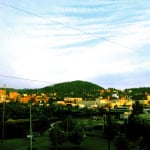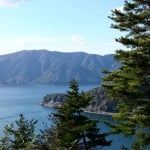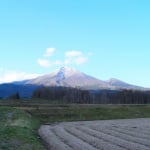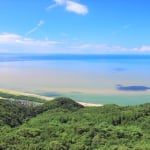Name: National May 18th Democratic Cemetery (국립5.18민주묘지)
Address: 200 Minju-ro, Buk-gu, Gwangju, South Korea (Unjeong-dong)
Official Website: http://518.mpva.go.kr/
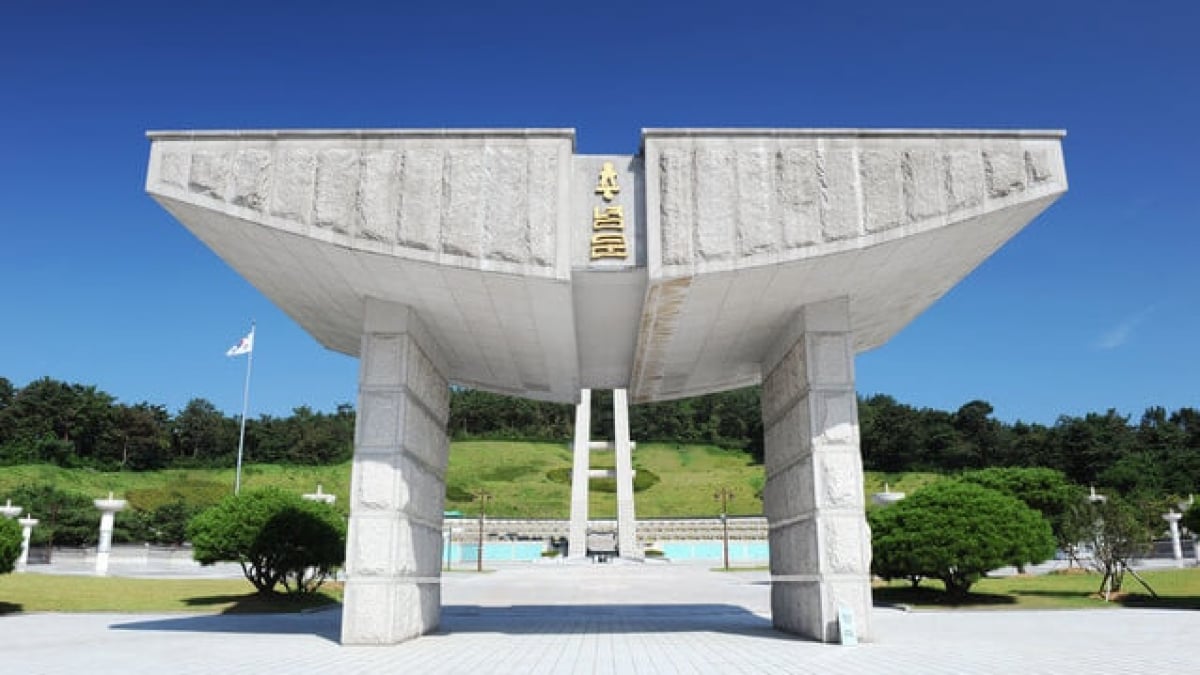
Gwangju: The Sacred Ground of Democratization and a Hub of Arts! 21 Must-Visit Tourist Spots
Gwangju, one of South Korea's five major cities, is not only a historic center of democratization movements but also a thriving hub for arts and culture. Located in the heart of Jeollanam-do, Gwangju played a pivotal role in South Korea’s modern history, being the site of significant events such as the Gwangju Uprising and the Gwangju Student Movement. While the city remains a symbol of democracy, it has also gained attention as an "artistic city" in recent years. Walking through its streets, you'll find stunning architecture, creative signboards, sculptures, and vibrant mural art adorning the urban landscape. Whether you're a history buff or an art enthusiast, Gwangju offers a unique blend of past and present. In this guide, we have carefully selected 21 must-visit tourist spots that showcase both Gwangju's rich history and its flourishing arts scene.
table of contents
[x] close
Gwangju: The Sacred Ground of Democratization and a Hub of Arts! 21 Must-Visit Tourist Spots
- 1. National May 18th Democratic Cemetery
- 2. Gwangju Sajik Park
- 3. Lee Jang-woo’s Traditional House
- 4. Choi Seung-hyo’s Traditional House
- 5. National Gwangju Museum
- 6. Gwangju Art Street (광주 예술의 거리)
- 7. 5.18 Democracy Square (5.18민주광장)
- 8. Former Jeollanam-do Provincial Government Office (구전라남도청)
- 9. National Asia Culture Center (국립아시아문화전당)
- 10. Mudeungsan National Park (무등산국립공원)
- 11. Jeungsimsa Temple (증심사)
- 12. Uijae Art Museum (毅斎美術館)
- 13. Chungjang-ro (忠壮路)
- 14. Curtis Memorial Hall (カーティスメモリアルホール)
- 15. Gwangju Municipal Folk Museum
- 16. Gwangju Hyanggyo
- 17. Gwangju Museum of Art
- 18. 5.18 Memorial Park
- 19. 5.18 Freedom Park
- 20. Gwangju Family Land
- 21. Chungjangsa Shrine (忠壮祠)
- ◎ Explore Gwangju: A City of History, Culture, and Nature
1. National May 18th Democratic Cemetery
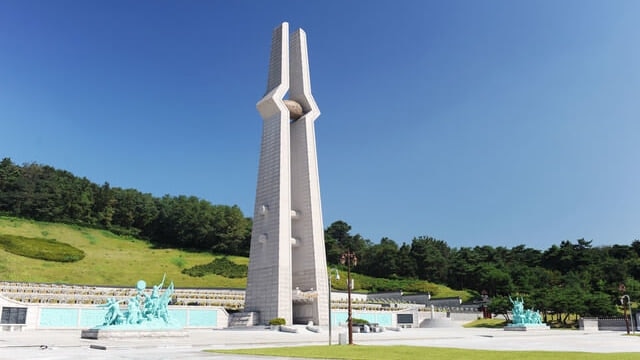
In 1979, after the assassination of the president, South Korea experienced a growing wave of democratization. In Gwangju, revolutionaries and students fought for a better future by advocating for democracy. The "Gwangju Uprising" of 1980 initially started as a student-led demonstration aimed at preventing the return of military rule.
However, the situation escalated as martial law forces brutally suppressed the protests. The streets of Gwangju soon turned into a battlefield. The demonstration was ultimately quelled by the Korean government, resulting in significant civilian casualties, with over 5,000 people estimated to have been killed or injured.
A significant historical landmark commemorating this tragic event is the National May 18th Democratic Cemetery. Its symbolic Memorial Tower, designed to resemble hands joined in prayer, honors the brave individuals who fought for freedom and democracy. Nearby, visitors can find stone monuments and bronze statues depicting scenes from the uprising, offering deeper insights into the historical events.
However, reservations must be made at least one week in advance. As an essential site for understanding modern Korean history, this cemetery is a must-visit for anyone traveling to Gwangju.
2. Gwangju Sajik Park
Gwangju Sajik Park, historically known as the site of the Sajik Altar, was once used for performing religious ceremonies. Today, it has been transformed into a serene urban retreat, offering visitors both a place of relaxation and a scenic viewpoint showcasing Gwangju's picturesque landscape.
While taking a leisurely stroll through its lush greenery is a delightful experience, the observation tower is the highlight of the park. From this vantage point, visitors can admire the city's ever-changing seasonal scenery as well as the dazzling nightscape that has earned Gwangju the nickname "City of Light."
Sajik Park is also equipped with various amenities, including a tennis court, a library, and open plazas, making it an excellent destination for families and couples alike. During April, when cherry blossoms are in full bloom, the park becomes a popular spot for hanami (flower viewing), providing an unforgettable springtime experience.
Name: Gwangju Sajik Park (광주사직공원)
Address: 10-1 Seoseopyeong-gil, Nam-gu, Gwangju, South Korea (Yangnim-dong)
Official Website: http://tour.gwangju.go.kr/jpn/main.cs
3. Lee Jang-woo’s Traditional House
Gwangju is home to many well-preserved traditional Korean houses, and Lee Jang-woo’s Traditional House (이장우가옥) is one of them. Originally owned by another family, the house was purchased in 1965 by its current owner, Lee Jang-woo, who has since managed and preserved it. Built in 1899, this house is now designated as a historical and cultural heritage site by the city.
This 1,600-square-meter hanok features a hip-and-gable roof style and consists of several key sections: the Haengnangchae and Sarangchae, where men traditionally resided, the Anchae , which was the main quarters for women, as well as inner and outer gates. Whether you're passionate about Korean architecture or simply curious about cultural heritage, this site offers a fascinating glimpse into Korea’s past.
Name: Lee Jang-woo’s Traditional House
Address: 21, Yangchon-gil, Nam-gu, Gwangju, South Korea
Official Website:http://tour.gwangju.go.kr/jpn/main.cs
4. Choi Seung-hyo’s Traditional House
The Choi Seung-hyo Traditional House (최승효가옥) was originally the home of Choi Sang-hyun (최상현), a Korean independence activist. This house holds historical significance as Choi and his fellow revolutionaries once used the attic as a secret hideout during the independence movement. Today, it stands as a historical landmark, allowing visitors to experience Korea’s rich history firsthand.
Currently, the descendants of Choi Seung-hyo manage the house, and it now serves as an art gallery, blending history and culture in a unique way. If you’re looking for a place to enjoy art while immersing yourself in the past, this is a must-visit destination.
Name: Choi Seung-hyo’s Traditional House (최승효가옥)
Address: 29-4, Yangchon-gil, Nam-gu, Gwangju, South Korea
Official Website:http://tour.gwangju.go.kr/jpn/main.cs
5. National Gwangju Museum
The National Gwangju Museum (국립광주박물관) is a cultural hub that showcases Gwangju’s traditional art and historical artifacts, collected from across Jeollanam-do Province. The museum is divided into seven zones, making it easy to explore and appreciate various historical periods and themes.
One of its highlights is the Twin Lion Stone Pagoda (双獅子石塔), a National Treasure featuring intricately carved lions supporting the structure instead of traditional pillars. The museum also houses two other national treasures and a vast collection of celadon pottery from the Goryeo Dynasty. It frequently hosts special exhibitions, children’s programs, and photography displays, making it an educational yet enjoyable destination for all visitors.
Name: National Gwangju Museum (국립광주박물관)
Address: 110, Haseo-ro, Buk-gu, Gwangju, South Korea
Official Website:https://gwangju.museum.go.kr/jpn/
6. Gwangju Art Street (광주 예술의 거리)
Gwangju is not only known as a city that has endured turbulent times but also as a vibrant hub for arts and culture. One of the must-visit attractions in this artistic city is Gwangju Art Street. This lively street is lined with galleries, art studios, and small theaters, offering visitors a chance to immerse themselves in the local art scene.
Every Saturday, the street transforms into a pedestrian zone, hosting a flea market with a variety of art-related vendors. Here, you can browse through a selection of artworks, antiques, and unique crafts, making it an excellent place for souvenir shopping. You might even stumble upon a rare find! If you love art and culture, Gwangju Art Street is a must-visit destination.
Name: Gwangju Art Street (광주 예술의 거리)
Address: 2 Yesul-gil, Dong-gu, Gwangju, South Korea (Stretch between Dongbu Police Station and Jungang-ro)
Official Website:http://tour.gwangju.go.kr/jpn/main.cs
7. 5.18 Democracy Square (5.18민주광장)
One of the most historically significant landmarks in Gwangju is 5.18 Democracy Square. This square became a symbol of democracy as it was a key site for protests, speeches, and demonstrations during the Gwangju Uprising. The presence of the former Provincial Government Office nearby made it a focal point of the movement.
Walking through this square, you can almost hear the echoes of the past—the voices of citizens demanding democracy. If you want to gain a deeper understanding of South Korea's democratic history, 5.18 Democracy Square is an essential stop on your Gwangju itinerary.
Name: 5.18 Democracy Square (5.18민주광장)
Address: Geumnam-ro 1-ga, Dong-gu, Gwangju, South Korea
Official Website:http://tour.gwangju.go.kr/jpn/main.cs
8. Former Jeollanam-do Provincial Government Office (구전라남도청)
Located near 5.18 Democracy Square, the Former Jeollanam-do Provincial Government Office was a crucial site during the Gwangju Democratic Movement. This building became the final stronghold of protesters, and tragically, many lives were lost when the military opened fire from its rooftop.
Despite its tragic past, the white facade of this historic building stands with a striking elegance, making the events that occurred here even more haunting. Around the area, you'll find memorials and sites related to the Gwangju Uprising, making it a meaningful stop for those wanting to understand South Korea’s fight for democracy.
Name: Former Jeollanam-do Provincial Government Office (구전라남도청)
Address: 38 Munhwajeondang-ro, Dong-gu, Gwangju, South Korea
Official Website:http://tour.gwangju.go.kr/jpn/main.cs
9. National Asia Culture Center (국립아시아문화전당)
Opened in 2015, the National Asia Culture Center was established to research, develop, and promote Asian culture and arts to the world. As a cultural landmark in Gwangju, the "City of Arts," this center attracts attention not only from Asia but also from around the globe.
One of its key facilities, the Democracy and Peace Exchange Institute, serves as a hub for promoting democracy and peace across Asia, commemorating the historic May 18 Democratic Movement. Meanwhile, the Asia Arts Theater provides a platform for the growth and celebration of performing arts, visual arts, and various creative expressions across the continent.
The vast complex consists of six specialized facilities, each dedicated to different cultural themes, hosting diverse events throughout the year. If you're looking for a place to immerse yourself in Asian culture, the National Asia Culture Center in Gwangju is a must-visit destination that continues to evolve and inspire.
Name: National Asia Culture Center (국립아시아문화전당)
Address: 38 Munhwa Jeondang-ro, Dong-gu, Gwangju, South Korea
Official Website: https://www.acc.go.kr/jp
10. Mudeungsan National Park (무등산국립공원)
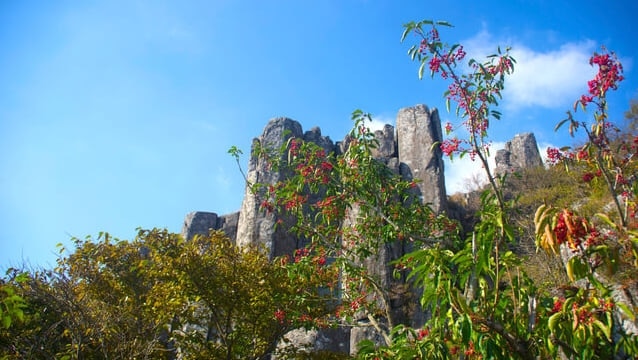
For nature lovers visiting Gwangju, Mudeungsan National Park is the perfect spot to experience the outdoors. With gentle slopes and well-maintained trails, this park is ideal for beginner hikers. One of its highlights is the Jusangjeolli Columnar Jointing, a striking rock formation that serves as a remnant of past volcanic activity—definitely worth the climb!
Throughout the year, Mudeungsan transforms with the seasons—vibrant azaleas bloom in spring, while the mountains are blanketed in breathtaking autumn foliage. Whether you go for a relaxing nature walk or a scenic hike, Mudeungsan National Park offers a refreshing escape into the beauty of South Korea’s natural landscapes.
Name: Mudeungsan National Park (무등산국립공원)
Address: Dong-gu, Gwangju; Damyang-gun & Hwasun-gun, Jeollanam-do, South Korea
Official Website: http://japanese.visitkorea.or.kr/jpn/TMC/TE_JA_7_1_1.jsp?cid=281629
11. Jeungsimsa Temple (증심사)
Nestled at the foot of Mudeungsan, Jeungsimsa Temple is one of Gwangju’s most significant Buddhist temples, with a history spanning over a thousand years. Many hikers visit not just for the mountain trails but also to admire this sacred site. Though much of the temple has been reconstructed due to past conflicts, it remains a spiritual landmark in the region.
One of its most remarkable structures is the Obaekjeon (Hall of 500 Arhats), which has been preserved in its original form. Inside, you’ll find 500 Arhat statues and ten disciple figures, creating an awe-inspiring atmosphere of devotion. If you seek peace and reflection, a visit to Jeungsimsa Temple is a must.
Name: Jeungsimsa Temple (증심사)
Address: 177 Jeungsimsa-gil, Dong-gu, Gwangju, South Korea
Official Website: http://www.jeungsimsa.org/
12. Uijae Art Museum (毅斎美術館)
The Uijae Art Museum was established to honor the remarkable achievements of Heo Baekryeon (許百鍊), a renowned master of Namjonghwa (Southern School painting). "Uijae" (毅斎) was his pseudonym, and throughout his lifetime, he created more than 20,000 artworks—each reflecting the strength and passion that defined his artistic journey.
Beyond painting, Uijae had another great love—tea. The museum features an authentic tea room, where visitors can experience a variety of teas. Amazingly, there is even a tea plantation in the backyard, offering a serene environment to enjoy a fresh cup of tea amidst nature. Isn't it luxurious to sip fragrant tea while surrounded by beautiful artwork?
The Uijae Art Museum is not only admired for its art collection but also for its architectural excellence. It won the Korean Architecture Culture Award in 2001, attracting visitors who come solely to admire its design. As one of Gwangju’s most prominent cultural landmarks, it is a must-visit destination for art lovers.
Name: Uijae Art Museum (의재미술관)
Address: 155 Jeungshimsa-gil, Dong-gu, Gwangju, South Korea
Official Website: http://www.ujam.org/
13. Chungjang-ro (忠壮路)
Chungjang-ro, the largest shopping district in Gwangju, is a must-visit destination for shopping enthusiasts. Often referred to as the “Myeongdong of Gwangju”, this area is always bustling with activity. Whether you're looking for fashion, accessories, or cosmetics, this shopping hub is the perfect place to discover the latest trends.
・Sections 1 to 3 house large shopping malls and fashion stores, making them a hotspot for young shoppers.
・Sections 4 and 5 feature shops specializing in hanbok (traditional Korean attire). From elegant wedding hanbok to adorable outfits for children, you’ll find a wide selection of traditional clothing here.
Aside from shopping, Chungjang-ro is also a paradise for food lovers, K-pop fans, and budget shoppers, offering trendy street food, K-pop merchandise, and affordable fashion items. With its diverse attractions, this vibrant district is a top destination for visitors of all ages.
Name: Chungjang-ro (충장로)
Address: Chungjang-ro, Dong-gu, Gwangju, South Korea
14. Curtis Memorial Hall (カーティスメモリアルホール)
Located in Yangnim-dong, Gwangju, Curtis Memorial Hall is a historic site that highlights the early Western influence in the region. This area was the center of missionary activities led by Eugene Bell, who helped establish churches, Christian hospitals, and the Speer Women's School, many of which still retain their original appearance.
Built in 1927, Curtis Memorial Hall is inside the former Speer Women's School, funded by Winsbro Women's birthday donation. The building’s triangular gable roof gives it a charming yet architecturally sophisticated look, making it a must-see spot for those interested in history and architecture.
Name: Curtis Memorial Hall (구 수피아여학교 커티스메모리얼홀)
Address: 242 Yangnim-dong, Nam-gu, Gwangju, South Korea
Official Website: http://tour.gwangju.go.kr/jpn/main.cs
15. Gwangju Municipal Folk Museum
The Gwangju Municipal Folk Museum is a must-visit for those who want to explore the everyday lives of Gwangju’s residents, from clothing, food, and housing to traditional customs, weddings, funerals, and local craftsmanship. Beyond daily life, the museum offers insights into Gwangju’s rich history and spiritual culture.
Visitors can see an extensive collection of real agricultural tools and household items used in the past, making the experience even more immersive. The museum also features an outdoor exhibition with stone monuments and pagodas, adding to its cultural appeal.
The well-organized displays make it an engaging and educational destination, even for young children, making it an excellent choice for a family-friendly trip. If you're looking to experience the authentic essence of Gwangju, this is the perfect place to visit.
Name: Gwangju Municipal Folk Museum (광주시립민속박물관)
Address: 48-25, Seohwa-ro, Buk-gu, Gwangju, South Korea (Yongbong-dong)
Official Website: http://gjfm.gwangju.go.kr/
16. Gwangju Hyanggyo
A Hyanggyo was a type of Confucian educational institution during the Joseon Dynasty, established in various regions. Among them, Gwangju Hyanggyo, founded in 1398, is known as a historically significant Confucian school. It is officially designated as a tangible cultural property of Gwangju, highlighting its deep historical roots.
A key attraction within the complex is the Daeseongjeon Hall, where ancestral tablets of great scholars are enshrined. Interestingly, this hall has endured numerous relocations and was burned down during the Japanese invasions of Korea (1592-1598). Fortunately, the sacred tablets were safely relocated, preserving their historical significance.
Today, Daeseongjeon Hall is regarded as a powerful spiritual site, attracting visitors who wish to draw inspiration and good fortune from the wisdom of past scholars. If you're looking to end your Gwangju trip on a meaningful note, make sure to visit Gwangju Hyanggyo.
Name: Gwangju Hyanggyo (광주향교)
Address: 5, Jungang-ro 107beon-gil, Nam-gu, Gwangju, South Korea
Official Website: http://www.gjhyanggyo.or.kr/
17. Gwangju Museum of Art
Opened in 1992, the Gwangju Museum of Art was the first public art museum established outside Seoul. It showcases an extensive collection of masterpieces by renowned artists from the Gwangju and Jeollanam-do regions, as well as contemporary works by emerging artists.
Here, visitors can admire masterpieces by Picasso, Dalí, and Chagall, making it an exciting cultural attraction for art lovers and casual visitors alike.
For those interested in hands-on activities, the museum offers art workshops and painting classes suitable for all ages, including young children. Whether you're a dedicated art enthusiast or a first-time visitor, this museum is a must-see in Gwangju.
Name: Gwangju Museum of Art (광주시립미술관)
Address: 52, Hwaseo-ro, Buk-gu, Gwangju, South Korea (Unam-dong)
Official Website: http://artmuse.gwangju.go.kr/
18. 5.18 Memorial Park
The site where the 5.18 Memorial Park (5.18기념공원) now stands was once home to "Sangmudae," the Army Training Command. The South Korean government later transferred this vast land to the citizens of Gwangju for free, paving the way for the establishment of this memorial park. The Gwangju Uprising, a tragic chapter in South Korea's struggle for democracy, led to many casualties—not only among activists but also among ordinary citizens. Today, the 5.18 Memorial Park serves as a solemn reminder of this history, attracting both the families of victims and visitors who wish to learn more about this pivotal event.
One of the park’s most striking features is the underground Memorial Space, where the names of those who perished are engraved. Other significant monuments include a statue of a grieving mother holding her lost child, a symbol of the deep sorrow left behind by the tragedy. Though some displays may be difficult to look at, they carry an important message about resilience and the price of democracy.
Visiting 5.18 Memorial Park provides a meaningful opportunity to reflect on a historical event that happened in a neighboring country. If you are interested in history, this park is definitely worth exploring.
Name: 5.18 Memorial Park (5.18기념공원)
Address: 152 Naebang-ro, Seo-gu, Gwangju, South Korea (Ssangchon-dong)
Official Website: http://518center.gwangju.go.kr/
19. 5.18 Freedom Park
For those interested in the Gwangju Uprising, another must-visit site is the 5.18 Freedom Park (5.18 자유공원). This is where citizens who participated in the democracy movement were detained and tried in military courts. A notable area within the park is the reconstructed Sangmudae, where life-sized figures realistically depict scenes of interrogations and court trials, giving visitors a chilling glimpse into the past.
Another key attraction is the Jayu Hall, a museum showcasing historical records and videos documenting the battle between citizens and martial law forces. The exhibitions vividly capture the events, making it an essential stop for those looking to understand this significant period in South Korean history.
Interestingly, despite its historical significance, the park also features a large open space where children can play. There are even bicycle rentals available, allowing visitors to cycle through the park. Watching people enjoy their freedom today is a stark contrast to the sacrifices made by the citizens of Gwangju decades ago—a poignant reminder of the struggles endured for democracy.
Name: 5.18 Freedom Park (5.18 자유공원)
Address: 13 Sangmu Peace-ro, Seo-gu, Gwangju, South Korea
Official Website: http://518center.gwangju.go.kr/
20. Gwangju Family Land
Although Gwangju is often associated with its democratic movement landmarks, the city also offers fun and entertainment. One of its top attractions is Gwangju Family Land (광주패밀리랜드), an amusement park that has been a favorite among locals since its opening in 1991.
This theme park features over 20 attractions, ranging from gentle rides for children to thrilling roller coasters for adrenaline seekers. In addition to the amusement park, visitors can enjoy a swimming pool, a sledding slope for winter fun, and even boat rides.
One of the highlights of Gwangju Family Land is its spectacular night illuminations, where approximately 5 million lights transform the park into a dazzling wonderland. Whether you're traveling with family or planning a romantic date in Gwangju, this amusement park is a great place to create lasting memories.
Name: Gwangju Family Land (광주패밀리랜드)
Address: 677 Uji-ro, Buk-gu, Gwangju, South Korea (Saengnyong-dong)
Official Website: http://xn--hc0bv1mlmclyce8d231a2iq.com/main.php
21. Chungjangsa Shrine (忠壮祠)
Chungjangsa Shrine is a sacred site in Gwangju, dedicated to General Kim Deok-ryeong (김덕령), one of the Three Loyal Patriots of Gwangju. A tragic yet revered historical figure, General Kim was falsely accused of involvement in a rebellion, subjected to brutal torture, and ultimately lost his life. However, his innocence was later proven, and he was honored for his contributions, making him an essential part of Gwangju’s history.
Did you know? Chungjang-ro, the busiest shopping and entertainment street in Gwangju, was named after him! Chungjangsa Shrine is now recognized as a powerful spiritual site, attracting visitors seeking good fortune and historical insight. If you’re exploring Gwangju, don’t miss the chance to visit this historically significant shrine and experience the strong energy that lingers here.
Name: Chungjangsa Shrine (충장사)
Address: 13 Songgang-ro, Buk-gu, Gwangju (Geumgok-dong)
◎ Explore Gwangju: A City of History, Culture, and Nature
Gwangju has a history marked by struggle and resilience, but don’t worry—there’s much more to experience beyond its historical sites. From lush green parks to vibrant art scenes and modern cityscapes, Gwangju offers a diverse range of attractions. As a city that played a crucial role in shaping modern Korea, visiting here is not just about sightseeing—it’s about understanding a pivotal chapter in Korea’s history. Get ready for a meaningful journey through Gwangju’s past and present, where every corner tells a story.
RELATED ARTICLES
REGIONS
CATEGORIES
FEATURED ON Guide
-
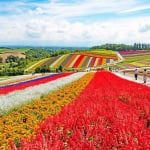
Where will you go for the summer vacation? Introducing recommended spots for domestic travel
-
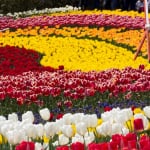
Kaizu City’s Recommended 7 Tourist Spots. Enjoy the Culture and History Nurtured by Wajū!
-
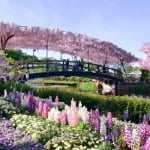
What Makes Ashikaga Flower Park So Special? A Treasure Trove of Photo-Worthy Spots!
-
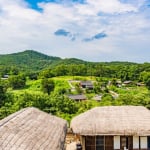
600 Years of Radiant Tradition: Korea’s Historic Villages of Hahoe and Yangdong
-

Two-Colored Seas and a Pink Beach! 4 Must-Visit Spots in North Eleuthera
MOST POPULAR ON Guide
-
 1
1Doha: Must-see Attractions in the Capital of Qatar
-
 2
2Toronto: 10 Things to do in this Picturesque Canadian City
-
 3
3Amarillo: A City Famous for It’s Amazing Canyons, Great History and Music
-
 4
4South Korea: Dazzling Scenery, Rich Culture and Fascinating History
-
 5
5Kuwait: A Country in Middle East Asia Famous for Hot Sand Dunes and Stunning Cityscape

